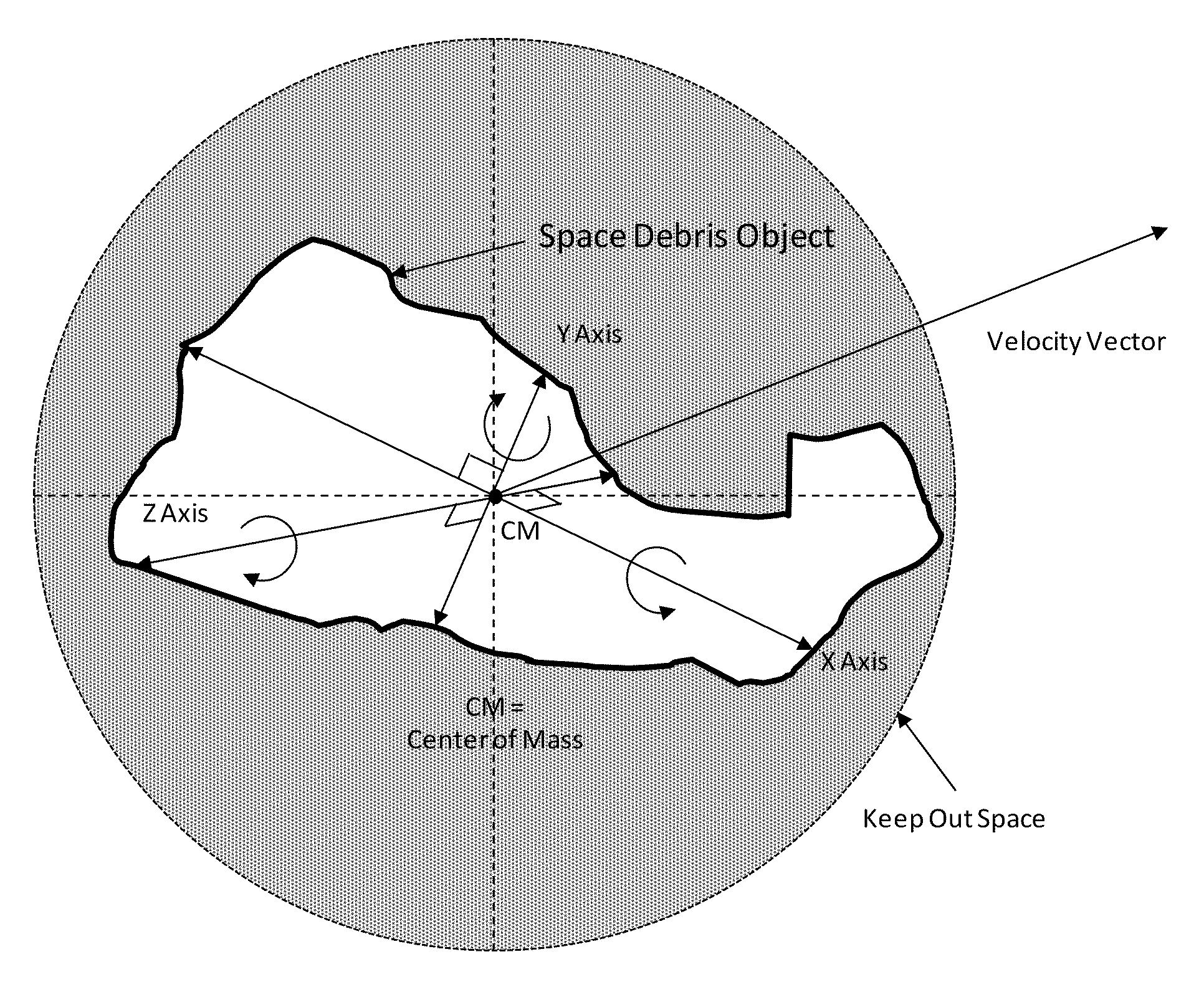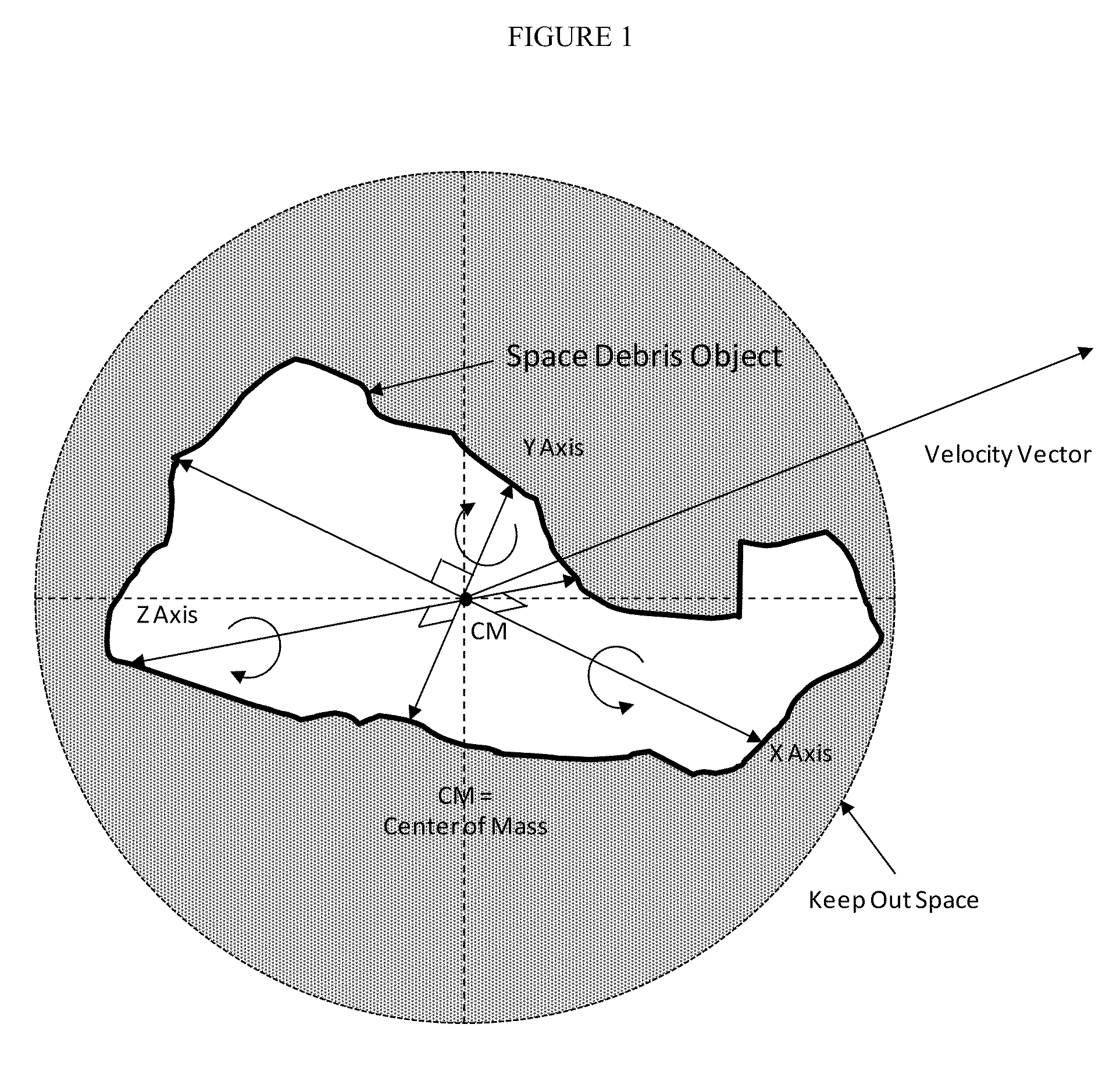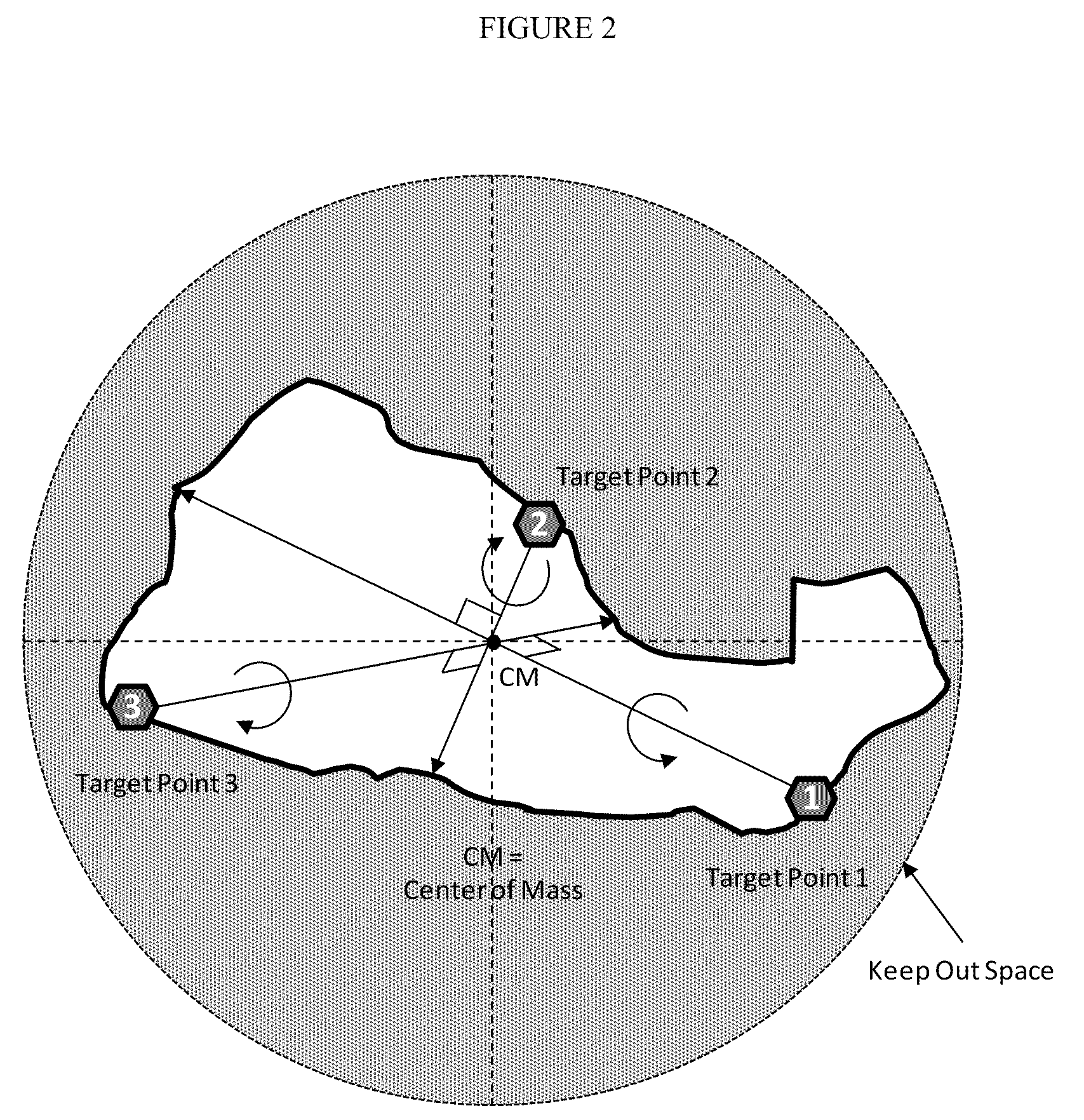Stabilization of unstable space debris
a technology of unstable space debris and stabilization, which is applied in the field of stabilization of unstable space debris, can solve the problems of space debris threatening the ability to safely operate spacecraft in earth orbit, affecting and reducing so as to ensure the safety of spacecraft operation and reduce the useful life of spacecra
- Summary
- Abstract
- Description
- Claims
- Application Information
AI Technical Summary
Benefits of technology
Problems solved by technology
Method used
Image
Examples
example 1
Method of Stabilizing Unstable Space Debris via Pneumatic Impingement
[0124]There are several hundred non-functioning rocket bodies (r / b) and spacecraft (s / c) in Low Earth Orbit (LEO) between 600 kilometers (km) and 2,000 km altitude which create the potential for an impact that will increase the population of space debris in LEO. In order to reduce the probability of collision, a decision is made to capture and de-orbit several of these rocket bodies and spacecraft each year. After surveying the non-functioning spacecraft and rocket bodies in that altitude band, it is determined that Rocket Body One has the highest potential for collision and so it becomes the highest priority to de-orbit. It is also determined that the attitude and orientation of Rocket Body One is unstable, that it exhibits characteristics of rotational motion in three axes, and that the rotational motion is coupled between all three axes so that the rotational motion appears to be random. Rocket Body One must be ...
example 2
Method of Stabilizing Unstable Space Debris and Capturing the Stabilized Space Debris
[0132]There are several hundred non-functioning rocket bodies (r / b) and spacecraft (s / c) in Low Earth Orbit (LEO) between 600 kilometers (km) and 2,000 km altitude which create the potential for an impact that will increase the population of space debris in LEO. In order to reduce the probability of collision, a decision is made to capture and de-orbit several of these rocket bodies and spacecraft each year. After surveying the non-functioning spacecraft and rocket bodies in that altitude band, it is determined that Rocket Body Two has a high potential for collision and so it becomes a high priority to de-orbit. It is also determined that the attitude and orientation of Rocket Body Two is unstable, that it exhibits characteristics of rotational motion in three axes, and that the rotational motion is coupled between all three axes so that the rotational motion appears to be random. Rocket Body Two mu...
example 3
Method of Stabilizing Unstable Space Debris and Altering the Orbital Path the Stabilized Space Debris
[0142]There are several hundred non-functioning rocket bodies (r / b) and spacecraft (s / c) in Low Earth Orbit (LEO) between 600 kilometers (km) and 2,000 km altitude which create the potential for an impact that will increase the population of space debris in LEO. In order to reduce the probability of collision, a decision is made to capture and de-orbit several of these rocket bodies and spacecraft each year. After surveying the non-functioning spacecraft and rocket bodies in that altitude band, it is determined that Spacecraft One has a high potential for collision and so it becomes a high priority to de-orbit. It is also determined that the attitude and orientation of Spacecraft One is unstable, that it exhibits characteristics of rotational motion in three axes, and that the rotational motion is coupled between all three axes so that the rotational motion appears to be random. Spac...
PUM
 Login to View More
Login to View More Abstract
Description
Claims
Application Information
 Login to View More
Login to View More - R&D
- Intellectual Property
- Life Sciences
- Materials
- Tech Scout
- Unparalleled Data Quality
- Higher Quality Content
- 60% Fewer Hallucinations
Browse by: Latest US Patents, China's latest patents, Technical Efficacy Thesaurus, Application Domain, Technology Topic, Popular Technical Reports.
© 2025 PatSnap. All rights reserved.Legal|Privacy policy|Modern Slavery Act Transparency Statement|Sitemap|About US| Contact US: help@patsnap.com



